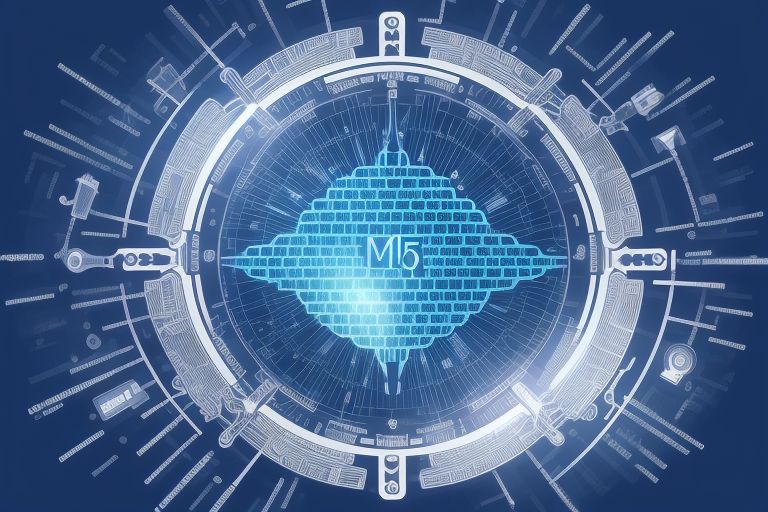Understanding MD5 Encryption and Decryption: Purpose, Uses, and Importance in 2024
Written by Thestrategicpost team and tool developed by Thestrategicpost dev team.
MD5 Encrypt & Compare Tool
Introduction to MD5
MD5 Encryption and Decryption (Message Digest Algorithm 5) is a widely used cryptographic hash function that produces a 128-bit hash value, typically rendered as a 32-character hexadecimal number. Designed by Ronald Rivest in 1991, MD5 was initially intended to be a secure hashing algorithm for verifying data integrity. Despite its historical significance, MD5 has faced significant scrutiny over the years, leading to evolving use cases and important considerations in modern applications.
How MD5 Works
MD5 processes an input (or “message”) and returns a fixed-size hash value. Here’s a simplified breakdown of how it works:
- Initialization: The algorithm begins with predefined constants that form the initial hash value.
- Padding: The input message is padded to ensure its length is a multiple of 512 bits. Padding involves appending a single ‘1’ bit, followed by necessary ‘0’ bits, and finally, a 64-bit representation of the original message length.
- Processing: The padded message is divided into blocks of 512 bits. Each block is processed through a series of mathematical operations including bitwise operations, modular addition, and non-linear functions.
- Output: The final hash value is produced after processing all blocks. This value is the MD5 hash of the original input.
Purpose and Uses of MD5
- Data Integrity: MD5 is commonly used to verify the integrity of data. By generating an MD5 hash of a file before and after transmission, one can detect any alterations that may have occurred during transfer.
- Checksum Generation: Many software distributions and file archives include MD5 checksums. Users can compare the provided checksum with one generated from their downloaded file to ensure that the file is complete and unmodified.
- Password Hashing: Historically, MD5 was used to hash passwords before storing them in databases. This practice, however, is now considered insecure due to vulnerabilities that allow for efficient hash cracking.
- Digital Signatures: MD5 hashes are used in digital signatures to ensure the authenticity and integrity of electronic documents.
- Cryptographic Applications: MD5 is sometimes used in various cryptographic algorithms as a component, though it is generally replaced by more secure hash functions in modern applications.
Why MD5 is Still Important in 2024
Despite its known vulnerabilities, MD5 remains important for several reasons:
- Legacy Systems: Many older systems and applications still rely on MD5 for hash generation. Migrating these systems to newer algorithms can be complex and costly.
- Speed: MD5 is computationally efficient and quick to execute, making it useful in scenarios where performance is a critical factor, even if security is not the primary concern.
- Non-Cryptographic Uses: MD5 is used in non-cryptographic contexts where security is less of a concern, such as in hash-based data structures (like hash tables) and fingerprinting applications.
- Educational Purposes: MD5 serves as a foundational example for understanding cryptographic hash functions. It helps learners grasp the basic principles of hashing and cryptography.
Security Concerns and Alternatives
While MD5 has practical uses, its security flaws are well-documented:
- Collision Vulnerability: Attackers can generate different inputs that produce the same MD5 hash, undermining the integrity checks.
- Speed: Its efficiency also makes it easier for attackers to perform brute-force attacks.
For applications requiring high security, algorithms like SHA-256 or SHA-3 are recommended as more robust alternatives. These newer algorithms offer better resistance against collisions and other attacks.
Conclusion
MD5 remains a prominent hash function due to its historical significance and efficiency. While it is no longer considered secure for critical cryptographic purposes, its legacy continues in various non-cryptographic applications and legacy systems. Understanding MD5’s function and limitations helps in making informed decisions about when and how to use hashing algorithms in 2024.
By incorporating a live demonstration of MD5 functionality, users can gain a practical understanding of how the algorithm works and its role in data integrity and security.
If you Liked Reading our Blog Read More Blogs Here and Below is the Link to our WhatsApp channel Join it for the Latest Post Updates. (Read For WhatsApp Channel Privacy and Security Here).
UseFull Resources:
| Resources | Resources |
|---|---|
| Tooldar: Tooldar | Hemingway Editor: Hemingway Editor |
| Ilovepdf3: Ilovepdf3 | Grammarly: Grammarly |
| Adorepdf: Adorepdf | Coursera: Coursera |
| Custom Design Agency: Articon Design Agency | Udemy: Udemy |
| Google: Google | Khan Academy: Khan Academy |
| Yandex: Yandex | Wolfram Alpha: Wolfram Alpha |
| Baidu: Baidu | TED Talks: TED Talks |
| Medium: Medium | Skillshare: Skillshare |
| Quora: Quora | Canva: Canva |
| Duolingo: Duolingo | Figma: Figma |
| Nerdfitness: Nerdfitness | Trello: Trello |
| DeepL: DeepL | Notion: Notion |
| LinkedIn: LinkedIn | Asana: Asana |
| Stack Overflow: Stack Overflow | Mailchimp: Mailchimp |
| GitHub: GitHub | Zapier: Zapier |
Note : These Above Resources Are just for Educational and ease of use Purposes we neither Endorse them, they were working at the time of sharing.
.Disclaimer: The information presented in this blog is for educational and informational purposes only and should not be considered financial, Political, or cultural advice. All efforts have been made to ensure the accuracy of the content at the time of writing.
Think We Missed Something?
If you notice an error or have a suggestion, we encourage you to submit a correction. Help us keep our information up-to-date and reliable!











